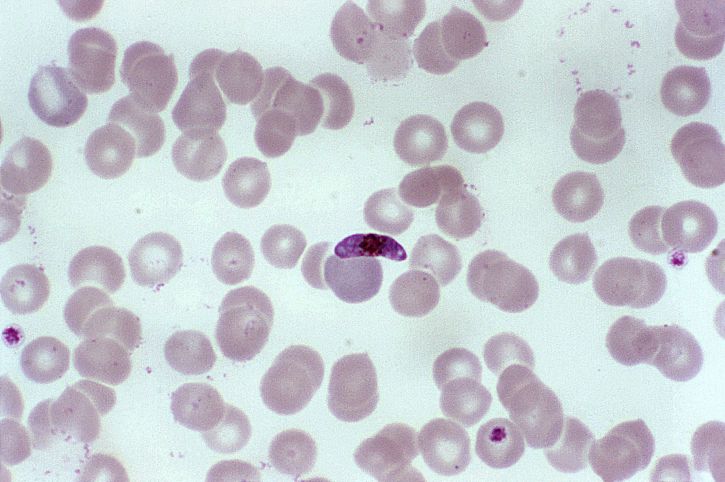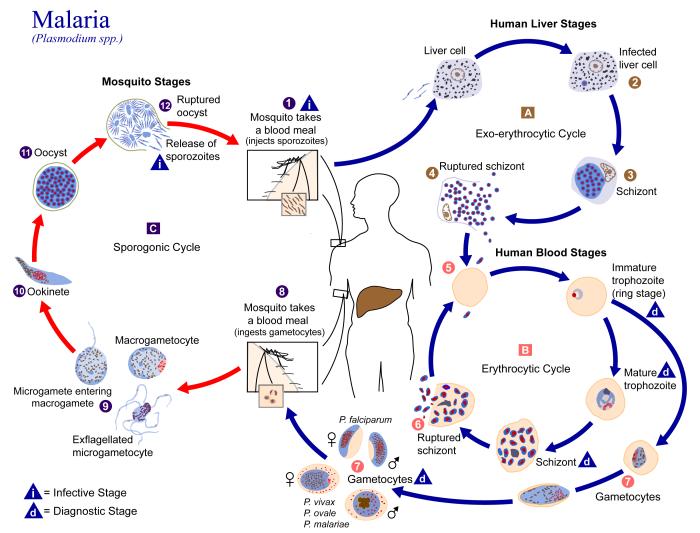Tree of the month: SERA5 from Plasmodium falciparum and the search for antimalarial vaccines
 Few products reflect better the mix of cultures and stories of our modern civilization than alcoholic beverages. Beer, for instance, is older than law itself and has soaked the throats of humankind since the beginning of agriculture. Rhum, on the other hand, is distilled from sugar cane and centuries of slavery and colonialism in the Caribbean seas. Meanwhile, vodka speaks about harsh and cold environments where the potato was a vital crop. finally, one of the most popular cocktails over there, the gin and tonic, has extremely deep roots in medieval medicine.
Few products reflect better the mix of cultures and stories of our modern civilization than alcoholic beverages. Beer, for instance, is older than law itself and has soaked the throats of humankind since the beginning of agriculture. Rhum, on the other hand, is distilled from sugar cane and centuries of slavery and colonialism in the Caribbean seas. Meanwhile, vodka speaks about harsh and cold environments where the potato was a vital crop. finally, one of the most popular cocktails over there, the gin and tonic, has extremely deep roots in medieval medicine.
For starters, the distillation process was discovered by arab alchemists in the middle age as a way to concentrate certain compounds. Ginnever was originated not much later as an herbal medicine in modern dutch territories, based on extract of juniper berries and many other plants. Ginnever arrived at the UK with the occupation of William of Orange, and quickly became very popular in the islands leading to the nowadays gin. The other half of the recipe is much more recent, but no less interesting. During the expansion of the British Empire, tropical diseases became a serious obstacle, specially malaria. In order to prevent malaria, the british used a prophylactic treatment based on quinine, an extract from the cinchona tree. But quinine is extremely bitter, and the prophylactic treatment requires a daily dosage. In order to make it more palatable, they started mixing the medicine with carbonated water first, and several other additives such as sugar or lemon, thus creating tonic water. And at some point during the colonization of India, someone decided to mix both gin and tonic, creating one of the most popular cocktails in the world as a way to prevent one of the most common infectious diseases in the world.
 Both medicine and gastronomy have advanced, and nowadays quinine is not the first choice as an antimalarial drug, nor the most important component of the tonic water (tonic water still has some quinine, but in a very small concentration and just to add some flavour). However, the need for effective ways to combat the different species of the apicomplexan parasite Plasmodium, causative agent of malaria, have not changed at all. Malaria is estimated to affect several hundred millions all over the world, and authorities fear that the natural vectors, Anopheles mosquitoes, spread to cold areas due changes in the climate conditions. A big effort is put into the control of the mosquito populations and biting, and pharmacological prophylaxis is possible yet unaffordable for many of the inhabitants of malaria epidemic zones. There have been some attempts to develop a vaccine, but none of them have been successful yet.
Both medicine and gastronomy have advanced, and nowadays quinine is not the first choice as an antimalarial drug, nor the most important component of the tonic water (tonic water still has some quinine, but in a very small concentration and just to add some flavour). However, the need for effective ways to combat the different species of the apicomplexan parasite Plasmodium, causative agent of malaria, have not changed at all. Malaria is estimated to affect several hundred millions all over the world, and authorities fear that the natural vectors, Anopheles mosquitoes, spread to cold areas due changes in the climate conditions. A big effort is put into the control of the mosquito populations and biting, and pharmacological prophylaxis is possible yet unaffordable for many of the inhabitants of malaria epidemic zones. There have been some attempts to develop a vaccine, but none of them have been successful yet.
T he main reason of the limited efficiency of vaccines is Plasmodium itself. The parasite infects erythrocytes and dwells within the cells, thus avoiding almost any possible attack from the immune system. But it still needs to penetrate the cell, making this process a weak spot that can be exploited as a therapeutical target. And here is where SERA5 makes its debut as a firm candidate for a vaccine target. First, SERA (serine repeat antigen protein) are a surface protein family with a papain-like protease domain, and SERA5 is highly expressed in the infectious merozoite stage. It seems to be essential for the parasite lifecycle, probably acting as a protease that helps the invasion process. Even more, patients that have suffered repeated infection and have acquired relative immunity to the parasite show high level of antibodies against SERA5, and antibody levels correlate to the immunitary protection against malaria. In Plasmodium falciparum, all the genes of the family bar one are located in tandem in chromosome 2, sharing high sequence identity and exonic architecture. Gene orthologs of SERA5 are present almost exclusively in Plasmodium species as a multigene family with a varying number of members per species that have formed in recent evolutionary terms by clustered gene duplication, as you can observe in our tree of the month, from the Quest for Orthologs Plasmodium falciparum phylome.
he main reason of the limited efficiency of vaccines is Plasmodium itself. The parasite infects erythrocytes and dwells within the cells, thus avoiding almost any possible attack from the immune system. But it still needs to penetrate the cell, making this process a weak spot that can be exploited as a therapeutical target. And here is where SERA5 makes its debut as a firm candidate for a vaccine target. First, SERA (serine repeat antigen protein) are a surface protein family with a papain-like protease domain, and SERA5 is highly expressed in the infectious merozoite stage. It seems to be essential for the parasite lifecycle, probably acting as a protease that helps the invasion process. Even more, patients that have suffered repeated infection and have acquired relative immunity to the parasite show high level of antibodies against SERA5, and antibody levels correlate to the immunitary protection against malaria. In Plasmodium falciparum, all the genes of the family bar one are located in tandem in chromosome 2, sharing high sequence identity and exonic architecture. Gene orthologs of SERA5 are present almost exclusively in Plasmodium species as a multigene family with a varying number of members per species that have formed in recent evolutionary terms by clustered gene duplication, as you can observe in our tree of the month, from the Quest for Orthologs Plasmodium falciparum phylome.
References:
http://www.ncbi.nlm.nih.gov/pubmed/25599609
http://www.ncbi.nlm.nih.gov/pubmed/22986493
http://www.ncbi.nlm.nih.gov/pubmed/21423628
http://www.ncbi.nlm.nih.gov/pubmed/17609844
http://www.ncbi.nlm.nih.gov/pubmed/13679369
Pictures:
Picture of the gin and tonic from NotFromUtrech, own work. Creative commons license
